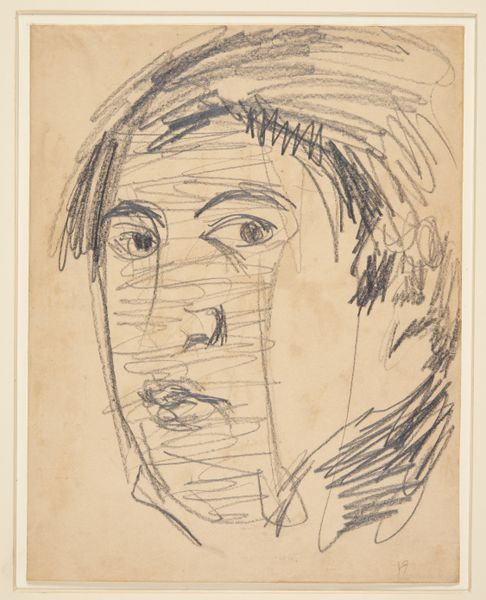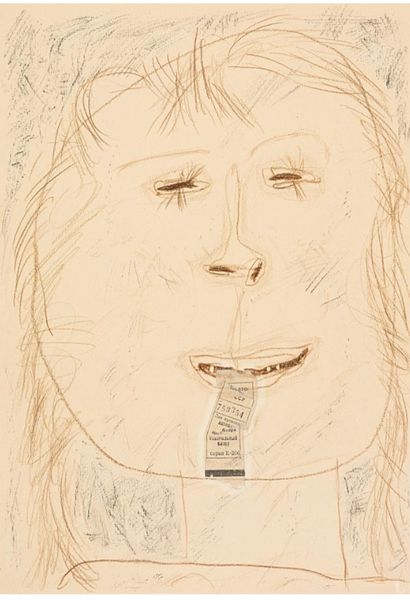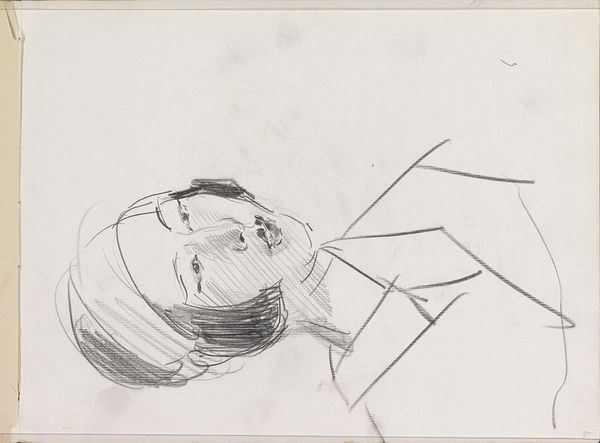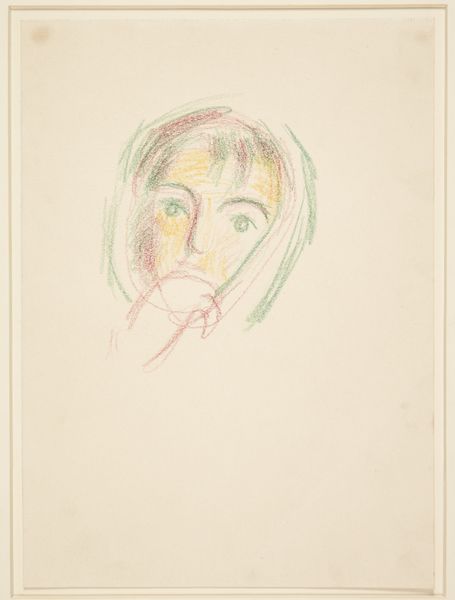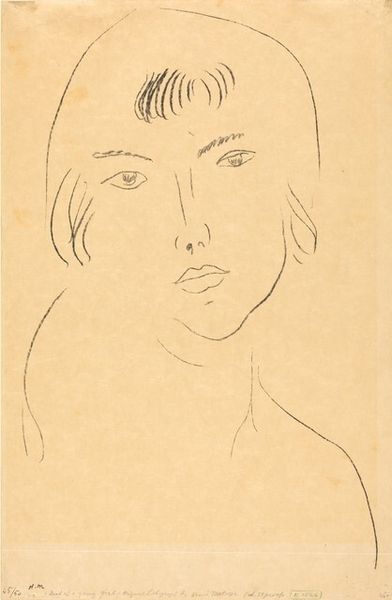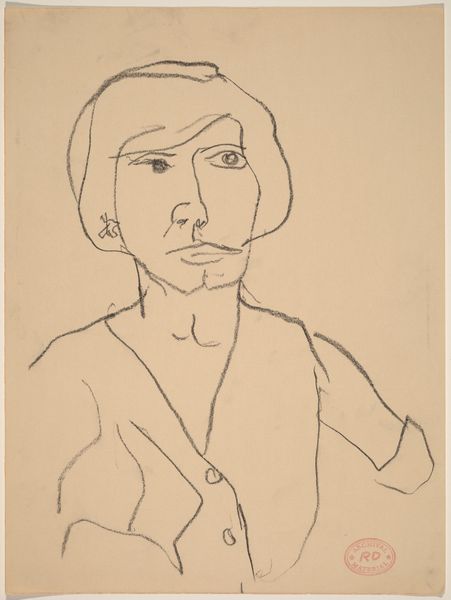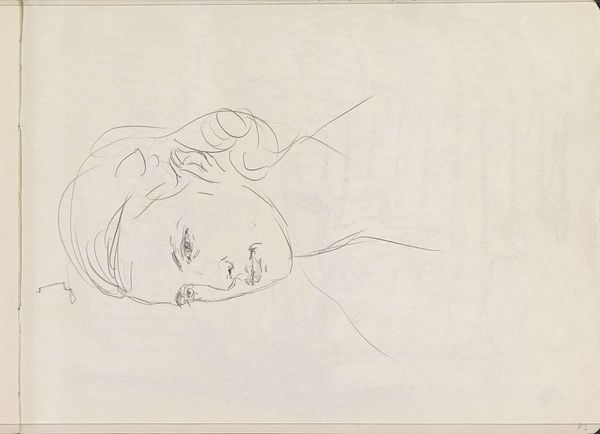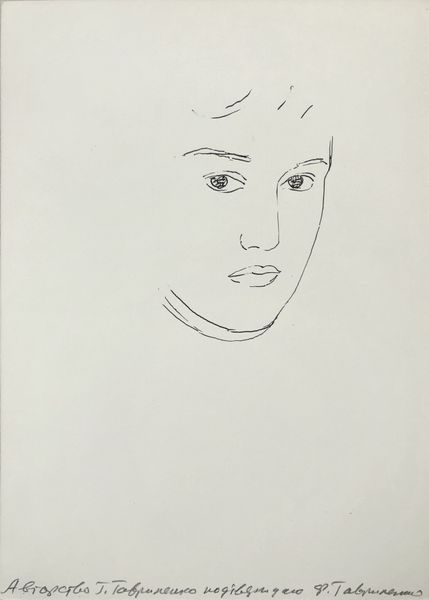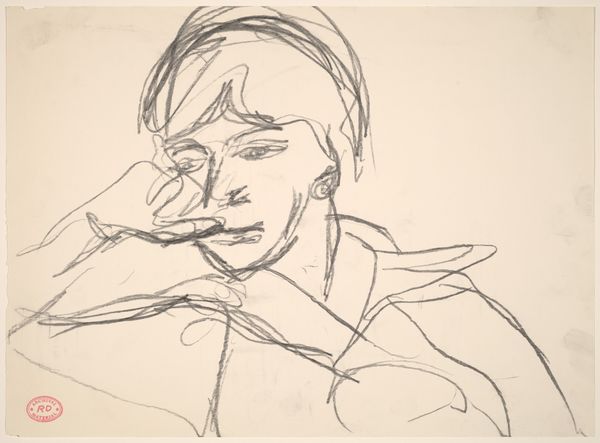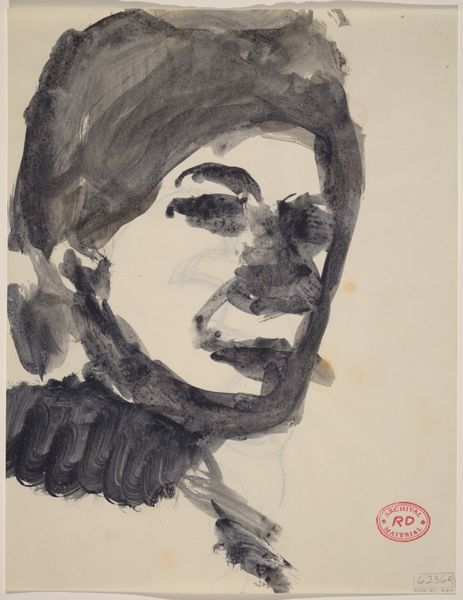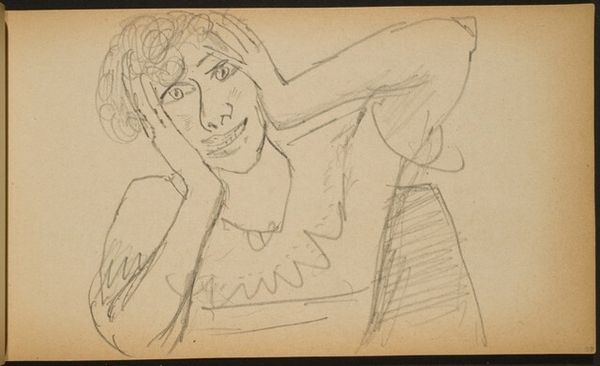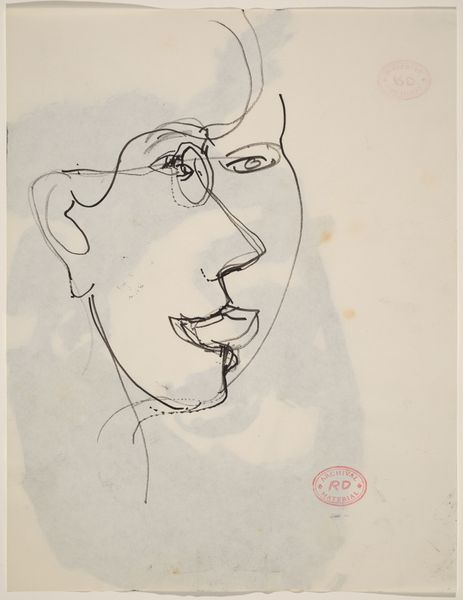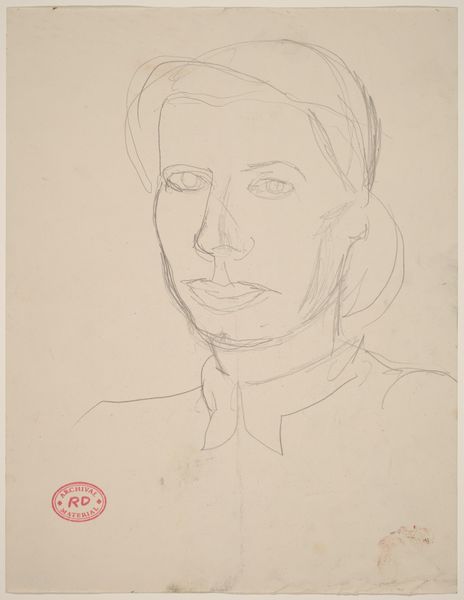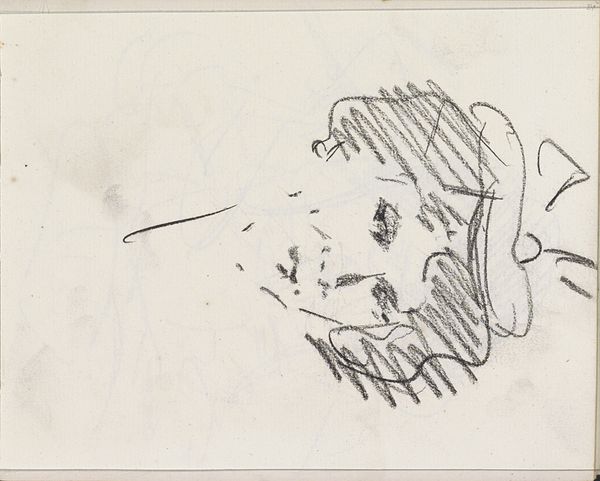![Untitled [study of a head] by Richard Diebenkorn](/_next/image?url=https%3A%2F%2Fd2w8kbdekdi1gv.cloudfront.net%2FeyJidWNrZXQiOiAiYXJ0ZXJhLWltYWdlcy1idWNrZXQiLCAia2V5IjogImFydHdvcmtzL2Q1YTczZGJhLTAyZTEtNDA0Yy1iZjE3LTdhZWY3YTcwODU1NS9kNWE3M2RiYS0wMmUxLTQwNGMtYmYxNy03YWVmN2E3MDg1NTVfZnVsbC5qcGciLCAiZWRpdHMiOiB7InJlc2l6ZSI6IHsid2lkdGgiOiAxOTIwLCAiaGVpZ2h0IjogMTkyMCwgImZpdCI6ICJpbnNpZGUifX19&w=3840&q=75)
drawing, ink
#
drawing
#
ink drawing
#
figuration
#
bay-area-figurative-movement
#
ink
#
line
Dimensions: overall: 15.6 x 15.2 cm (6 1/8 x 6 in.)
Copyright: National Gallery of Art: CC0 1.0
Curator: We’re looking at an ink drawing by Richard Diebenkorn, likely created sometime between 1955 and 1967. It’s an untitled study of a head, and what strikes me is its seeming simplicity, yet the more I look, the more elusive it becomes. Editor: Elusive is a good word. My immediate reaction is that this feels unfinished, raw, a glimpse into the artist’s process. There’s something quite vulnerable about a study like this, stripped of pretension. What do you see in terms of social context or perhaps identity here? Curator: Well, beyond the minimalist aesthetic, there’s a negotiation with how the male gaze, historically situated, intersects with artistic representation. It's intriguing, isn't it, that the focus is simply on the head? There's a distancing, an objective exploration of form that simultaneously objectifies and maybe, attempts to understand. The sitter, devoid of identifying markers, exists, almost clinically. Editor: I wonder about the rapid lines though – almost frenetic in places – could it be a sort of expression of intimacy? An urgency to capture a fleeting moment, which could shift that reading a bit? Perhaps he's trying to understand an aspect of himself. After all, a gaze implies a relationship. Curator: Perhaps you are onto something; perhaps there’s that performative aspect too; you wonder if Diebenkorn sees art itself as something akin to an identity; those lines speak more, as you mentioned, to a fluid state of becoming than anything stable. And in that sense, the abstraction and those chaotic scribbles give it an unmoored sensibility and sense of being unfulfilled with societal restrictions that might explain his approach to art making. Editor: Precisely, the work embodies fluidity, uncertainty—resisting definitive readings, it’s an intentional embrace of ambiguity. Even as just a head. What about how he chose ink and that linear style. There’s almost no shading or blending. Curator: He used the lines as building blocks. So I understand that that reduction lends that more conceptual edge where we have to read into the work a bit. Like how, you point out, it’s really about how Diebenkorn is exploring self through these abstract expressions with the face as its grounding point. I find that compelling; thank you. Editor: Agreed, there is such openness to how it resists simple interpretation which may invite, well, future study of art in culture and thought!
Comments
No comments
Be the first to comment and join the conversation on the ultimate creative platform.
